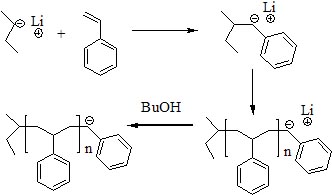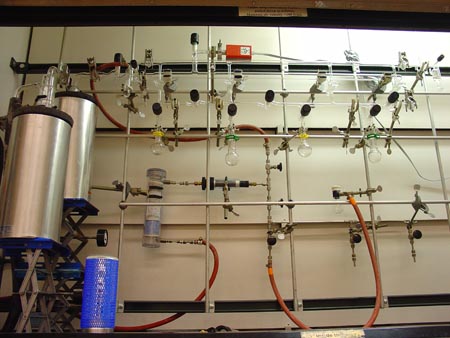 Using anionic and living free radical polymerization, we can prepare a wide variety of synthetic homopolymer and block copolymer materials with low polydispersity and well-defined structures. Both polymerizations are chain growth mechanisms: an initiator reacts with a monomer to form an active growing chain (step 1), which is either hindered in its reactivity or unreactive with other growing chains, making this active species "living." As the chains grow, they will all add monomers at the same rate, so they all end up with approximately the same length (step 2). After the desired conversion is reached, a terminator is added to kill the living chans and end the reaction (step 3).
Using anionic and living free radical polymerization, we can prepare a wide variety of synthetic homopolymer and block copolymer materials with low polydispersity and well-defined structures. Both polymerizations are chain growth mechanisms: an initiator reacts with a monomer to form an active growing chain (step 1), which is either hindered in its reactivity or unreactive with other growing chains, making this active species "living." As the chains grow, they will all add monomers at the same rate, so they all end up with approximately the same length (step 2). After the desired conversion is reached, a terminator is added to kill the living chans and end the reaction (step 3).

An anionic synthesis line designed by Prof. Olsen while at UC Berkeley. Due to the reactive nature of carbanions, anionic polymerization requires stringent air-free synthesis techniques.
